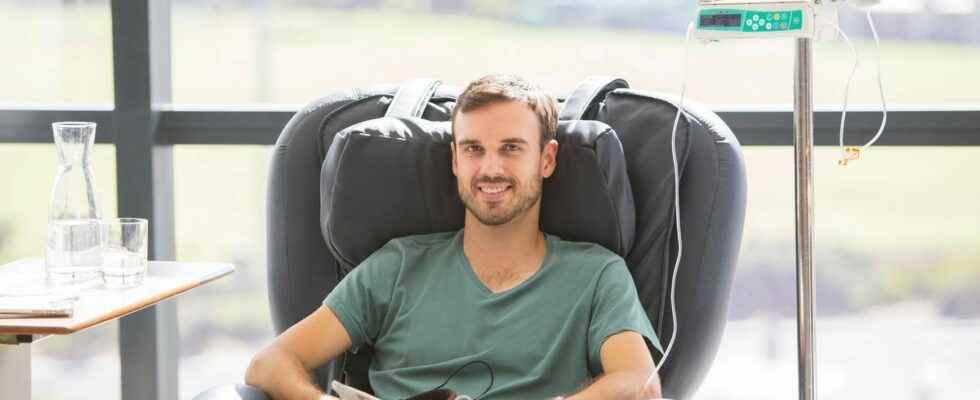Published on
Updated
Reading 3 mins.
in collaboration with
Ivan Pourmir (medical oncologist)
As part of treatment for advanced lung cancer, a 41-year-old Frenchman was the first patient to benefit from a new cell therapy, based on clonal T cells reactive with neoantigens (cNeT) at the CHU Lyon South. The explanations of Dr Ivan Pourmir, medical oncologist at the George-Pompidou European Hospital in Paris.
As part of an international clinical trial called Chiron on cell therapy against cancer, the Lyon University Hospital has just announced the treatment of the first French patient, Alban, aged 41, with a new treatment of this type.
A new weapon against solid tumors
This new treatment, which belongs to the family of cellular therapies, is called cNeT, for clonal Neoantigen Reactive T Cell or clonal T lymphocytes reactive to neo-antigens. This is a treatment that uses the patient’s own immune cells to fight the cancer. “This is a technique similar to that of Car-T cellssays Dr. Pourmir, a medical oncologist at the George-Pompidou European Hospital.However, the technique is slightly different here because solid tumor cells, as is the case here for lung cancer, do not have a common antigen to target.”
For this CneT cell therapy, it is more particularly the patient’s T lymphocytes, which are white blood cells capable of recognizing cancerous cells, which will be taken from within the lung tumour. The T lymphocytes will then be modified and amplified in vitro in order to fight the patient’s tumor, by being reinjected into the patient’s blood. A fragment of the tumour, removed by surgery, will be packaged for transport and shipment to the UK. The transformation is then carried out in the laboratories of the biotechnology company Achilles.
“The method consists of isolating the T lymphocytes present in the tumor and the dendritic cells present in the blood. The particularity of this process lies in a rather technical step: the DNA sequencing of the tumor and the patient, then the search for neo-antigens – specific “markers” of the tumor which make it sensitive to immunotherapies and cells immunity using an artificial intelligence tool. The neo-antigens, specific to the patient, discovered are then synthesized. T cells, dendritic cells and neo-antigens are then “co-cultivated” and produced in large quantities. It is these cells (cNeTs) that will be able, once reintroduced into the patient’s body, to recognize and destroy tumor cells.“details the press release from the Lyon University Hospital.
A 14-day hospitalization after the injection
Alban is therefore the first French patient to have benefited from this new therapeutic option in the context of advanced lung cancer, on January 24th. “He is tired but the procedure went very well” indicate the doctors of the CHU Lyon, who worked in a multidisciplinary team. The patient was therefore only able to return home on February 7, because after the injection, the patient must remain hospitalized until his immune system is reconstituted. and that it no longer has too significant undesirable effects.
“For Alban, the procedure went perfectly and he was released from the hospital 14 days after his injection. He will now be monitored every week by Professor Couraud, as part of the Chiron trial.“Additionally specifies the press release from the hospital. Already, at least four other patients should have access to this therapy in the coming months, within the Hospices Civils de Lyon, the only establishment to deliver this protocol in France.
The opinion of Dr Ivan Pourmir, medical oncologist at the George-Pompidou European Hospital in Paris
“This treatment constitutes one of the ways of research to fight against solid cancers, such as lung cancer. However, the infrastructures necessary for this type of protocol do not exist everywhere in France, and it remains a technique that is both costly, in terms of logistics and risky, because it is not known whether the cells collected will survive. Another more promising treatment consists in recovering the tumor-fighting white blood cells from the patient’s blood: it is a less invasive procedure, which does not require surgery but simply a large blood sample, such as a blood donation.“.
